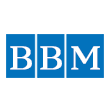Definition
BBM Definition
The business models’ definition distinguishes primarily between the key banking activities (i.e. retail versus market or mixed) and the funding strategies (i.e. retail versus market or mixed) (in Ayadi, 2019) [1]. Five instruments, which constitute the defining activity/funding features of a business model in banks from an asset and liability stand point, were used to form the business models:[2]
- Loans to banks (as % of assets).This indicator measures the scale of wholesale and interbank activities, which proxy for exposures to risks arising from interconnectedness in the banking sector.
- Customer loans (as % of assets).This indicator identifies the share of customer loans to non-bank customers, indicating a reliance on more traditional banking activities.
- Trading assets (as % of assets).These are defined as non-cash assets other than loans; a greater value would indicate the prevalence of investment activities that are prone to market and liquidity risks.
- Debt liabilities (as % of assets).These are defined as non-equity liabilities other than deposits and derivatives. Although bank liabilities are comprised of short-term interbank debt, the broader debt liabilities indicator provides a general insight into the bank’s exposure to market funding.
- Derivative exposures (as % of assets).[3]This measure aggregates the carrying value of all negative derivative exposures of a bank, which are often identified as one of the key (and most risk prone) financial exposures of banks with heavy investment and trading activities.
BBM Identification Method
To identify the bank business model, we use the Clustering Methodology and Statistical Analysis System software is also used.
The assignment of individual banks to a specific model, depends crucially on the definition adopted, the choice of instruments and procedures, such as the proximity metric, procedures for forming clusters and the stopping rules used.
Although the literature on the technical aspects of cluster analysis is relatively well-developed, there is little theory on why certain procedures perform better than others.[1] In choosing instruments, attention was given to testing a variety of alternative configurations. The five indicators mentioned above led to the most consistent and distinct clustering.
Dropping or adding variables resulted in a substantial worsening of the statistical measures of distinct clustering, which suggests that the chosen set adequately identifies the main distinguishing characteristics of the sampled banks.
As the discussion below makes clear, the characteristics of the business models that are identified by the cluster analysis are, by and large, in line with expectations. Despite these efforts, it is certainly true that the outcomes may change when using other configurations. Notwithstanding this qualification, using this configuration is useful for a continuous dynamic analysis of bank business models.
BBM Descriptions
Retail diversified type 1 – banks that are diversified on the asset side with high reliance on retail deposits
Retail diversified type 2 – banks that are diversified on the asset side with high reliance on wholesale funding
Focused retail – banks that are retail focused on the asset and liability sides
Investment – banks that are predominately investment on the asset side and display diversified funding
Wholesale – banks that are predominately wholesale on the asset and liability sides
[1] See Everitt et al. (2001) for a highly readable introduction to cluster analysis and some of the practical issues in the choice of technical procedures.
Everitt, B.S., S. Landau and M. Leese (2001), Cluster Analysis, Fourth Edition, West Sussex: Wiley, John & Sons Ltd.
[2] Alternative instrument combinations were also considered. In many cases, using a different set of instruments led to an unrealistically large number of clusters, with many comprising a single bank/year. Removing any one of the five indicators from the clustering exercise also led to indistinct clustering. In turn, using a larger set of instruments did not change the results substantially, as long as the defined indicators were included.
[3] Total derivative exposures are defined as the summation of positive and negative fair values of all derivative transactions, including interest, currency, equity, OTC, hedge and trading derivatives.

